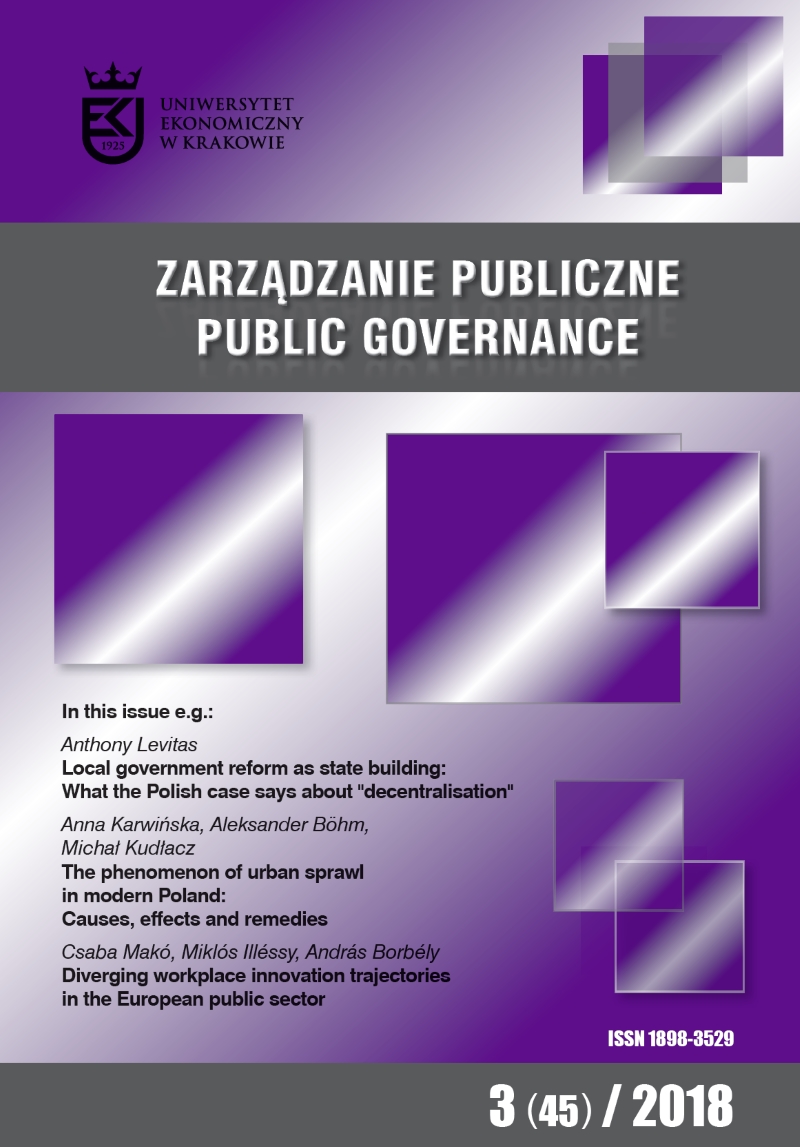Diverging workplace innovation trajectories in the European public sector (a preliminary cross-country comparison)
Diverging workplace innovation trajectories in the European public sector (a preliminary cross-country comparison)
Author(s): Csaba MAKÓISubject(s): Politics / Political Sciences, Economy, National Economy, Business Economy / Management, Public Finances, Socio-Economic Research
Published by: Uniwersytet Ekonomiczny w Krakowie we współpracy z Wydawnictwem Naukowym Scholar
Keywords: Innovation; private/public sector; work organisation; creativity; learning organisations
Summary/Abstract: Objectives: The core aim of this paper is to improve our knowledge base on the innovation process comparing how public and private organisations can develop abilities to innovate in order to cope with the challenges created by the changing priorities of the political market, the intensification of global competition and the higher speed of the technological changes. The authors intend to identify and compare the creative/learning capabilities of the workplaces in the EU-27 countries.Research Design & Methods: In testing empirically the various types of jobs our analysis uses the data sets of the fourth (2005), fifth (2010) and sixth (2015) waves of the European Working Conditions Survey (EWCS). The EWCS is a crosssectional survey taken in every five years since 1990, organised by the European Foundation for the Improvement of Living and Working Conditions (Eurofound, Dublin). The recent editions of this survey cover more than 40,000 workers in the EU member states and in various other European countries (Eurofound, 2017). We used a cluster analysis in order to identify three clusters of jobs in Europe and their prevalence in different countries and country groups.Findings: The data from the European Working Condition Surveys (2005, 2010 and 2015) shows that in the public administration boosts creative workplaces in all countries. The ability of organisations to mobilise their internal resources into efficient and dynamic routines depends on intangible resources (e.g. creativity) and less on such traditional tangible factors such as physical or financial sources. Powering public sector innovation is inhibited by the following major factors: unfavourable institutional settings; weak innovation leadership; lack of systematic knowledge of the innovation process; and a shortage of the systematic data collection at both the EU and Member State levels.Implications & Recommendations: The increasing rate of creative jobs may speed up the implementation of the “High-Engagement Civil Services” to improve both efficiency and quality of work in the public sector. A more profound and evidence-based understanding of the innovation processes at the workplace level would allow us to exploit the full potential thereof in terms of positive impacts on both employment and job quality.Contribution & Value Added: Despite the fact that innovation studies have been at the heart of socio-economic research for decades now, relatively little attention has been paid on innovation in the public sector. This research topic has gained more importance only in the 2010s and thus there is often a lack of empirical evidence for this sector, which plays a crucial role in all developed economies as a major employer as well as the main actor shaping the regulatory environment. This article is among the first attempts aimed at giving insights into the job characteristics of public sector organisations.
Journal: Zarządzanie Publiczne
- Issue Year: 2018
- Issue No: 45
- Page Range: 44-59
- Page Count: 16
- Language: English

